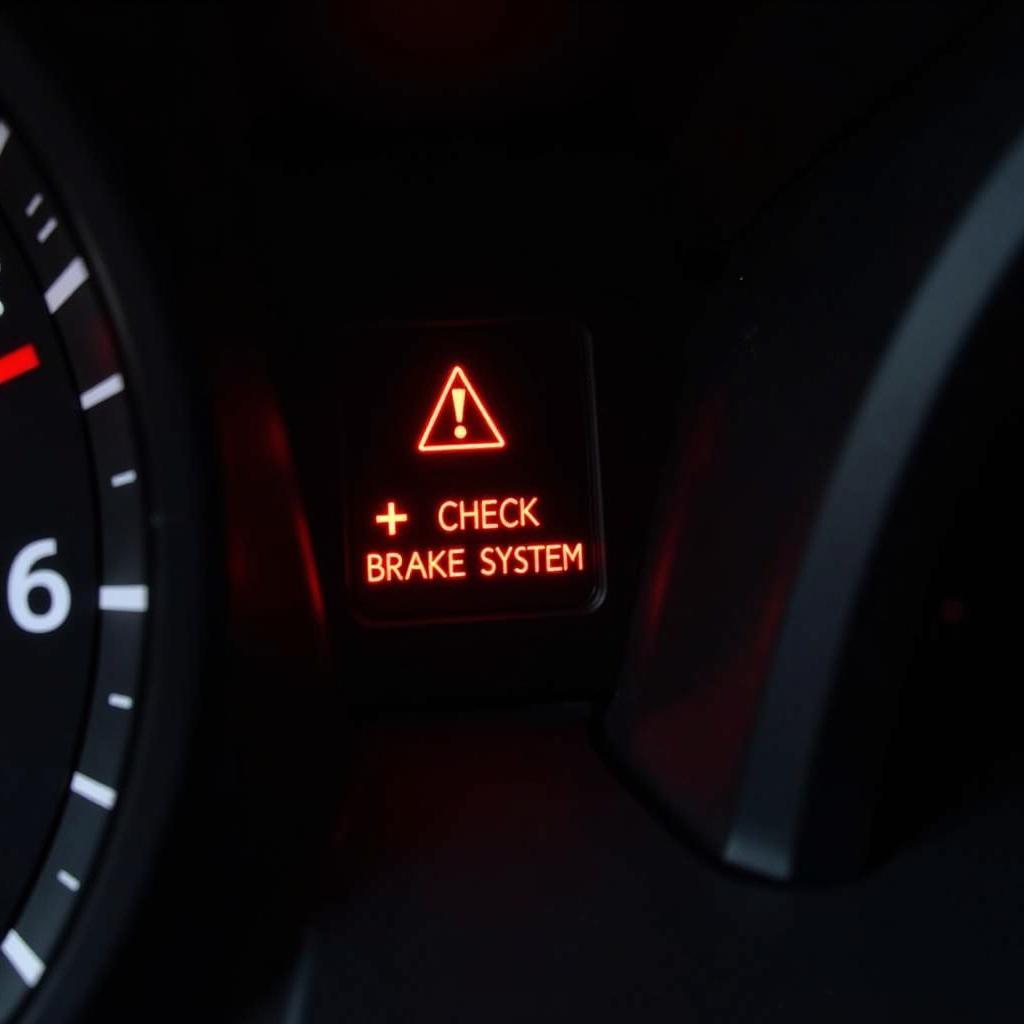The brake light warning appearing on your 2000 Audi TT dashboard can be a real head-scratcher. Is it a minor glitch or a sign of a serious issue? Don’t panic! This article will guide you through the potential causes and offer solutions to help you get back on the road safely.
Common Reasons Your Audi TT Brake Light Warning is On
Understanding why your brake light warning is illuminated is the first step to resolving the issue. Here are some common culprits:
1. Worn Brake Pads
This is the most frequent offender. Brake pads have wear indicators that trigger the warning light when they wear thin, signaling it’s time for a replacement.
2. Faulty Brake Light Switch
This switch, located behind the brake pedal, can wear out or fail. If it does, the brake lights may stay on constantly, flicker, or not illuminate at all.
3. Blown Brake Light Bulb
Just like any other bulb, brake light bulbs can burn out. Thankfully, this is a simple and inexpensive fix.
4. Brake Fluid Leak
Brake fluid is the lifeblood of your braking system. A leak in the system can cause a drop in pressure, triggering the warning light.
5. Faulty ABS Sensor
The Anti-lock Braking System (ABS) relies on sensors to function correctly. A malfunctioning sensor can trigger the brake light warning.
“Many drivers overlook the importance of regular brake fluid checks. Remember, a small leak can escalate quickly and compromise braking performance.” – Johnathan Miller, Certified Master Technician
Troubleshooting Your Audi TT’s Brake Light Warning
Now that you know the potential causes, here’s a step-by-step guide to help you troubleshoot:
-
Check the brake fluid level. Park on a level surface, open the hood, and locate the brake fluid reservoir. Ensure the fluid level is between the minimum and maximum marks. If it’s low, you likely have a leak that needs professional attention.
-
Inspect the brake lights. Have a friend press the brake pedal while you check if all brake lights are working correctly. Replace any blown bulbs.
-
Inspect the brake pads. If you’re comfortable with basic car maintenance, you can visually inspect the brake pads. Look for significant wear or if they are thinner than ¼ inch. If in doubt, consult a mechanic.
-
Consider professional diagnostics. If you’ve checked the obvious culprits and the warning light persists, it’s best to seek professional help. A mechanic can use a diagnostic tool to pinpoint the exact issue.
Don’t Ignore the Warning!
Ignoring a brake light warning can be dangerous. Addressing the issue promptly ensures your safety and prevents potentially costly repairs down the line.


